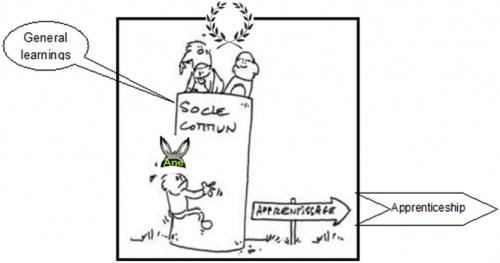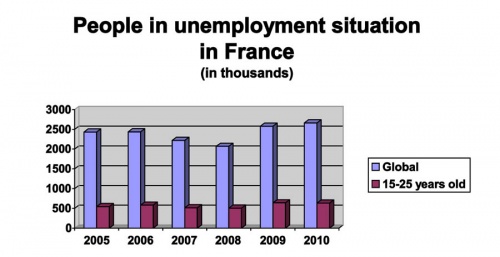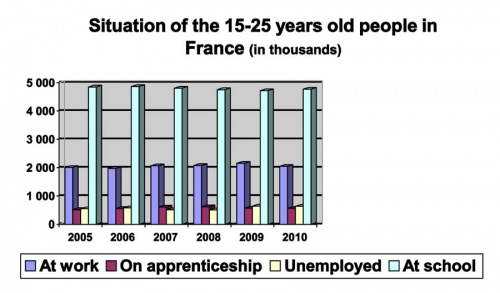Summary of analysis of the local and regional situation of the transition school to work, France
è Apprenticeship: from educational failure to vocational achievement.
Before 1987:

For many years, general education was regarded in France as the best route to access to employment.
Technical and vocational learning courses in alternation mode were fueled by disadvantaged youth who rarely reached high school.
The result: a devaluation of technical learning courses for the benefit of general education and as a consequence a massive unemployment of young people leaving initial education without any qualifications.
As well, another phenomenon appeared: youth unemployment overqualified unable to find employment despite degrees reached.
On another hand, the labor market demands for skilled labor, young labor (because of tax reduction measures related to employing young people) and labor with a first professional experience. The problem was: how to combine (and reconcile) initial training and vocational training; how to combine training and professional experience?
To face this growing problem, the various governments have sought to revalue both the courses and the learning mode[1]. Initially the level of qualification available through the apprenticeship has been upgraded. Then the different devices and conventions framing courses in alternation mode were combined and streamlined.
Finally, the different economic actors (consular agencies, local governments, employers and VET providers) are now closely involved in policy making for vocational training qualifications.
The goal is to link the provision of training with the realities of the labor market to enable each young person to find his place in a learning device leading to employment.
[1] The 1987 act allows apprentices to reach superiors levels of qualification, as engineer degree (ISCED level 5).
In 1993, VET was reformed in order to promote collaboration between educational structures and economical actors as companies and employers.
In 2005, the “social cohesion act” gave apprenticeship a new impulse by simplifying and formalizing the access from initial to vocational learning. Today, people in apprenticeship are considered as well as learners AND workers.







